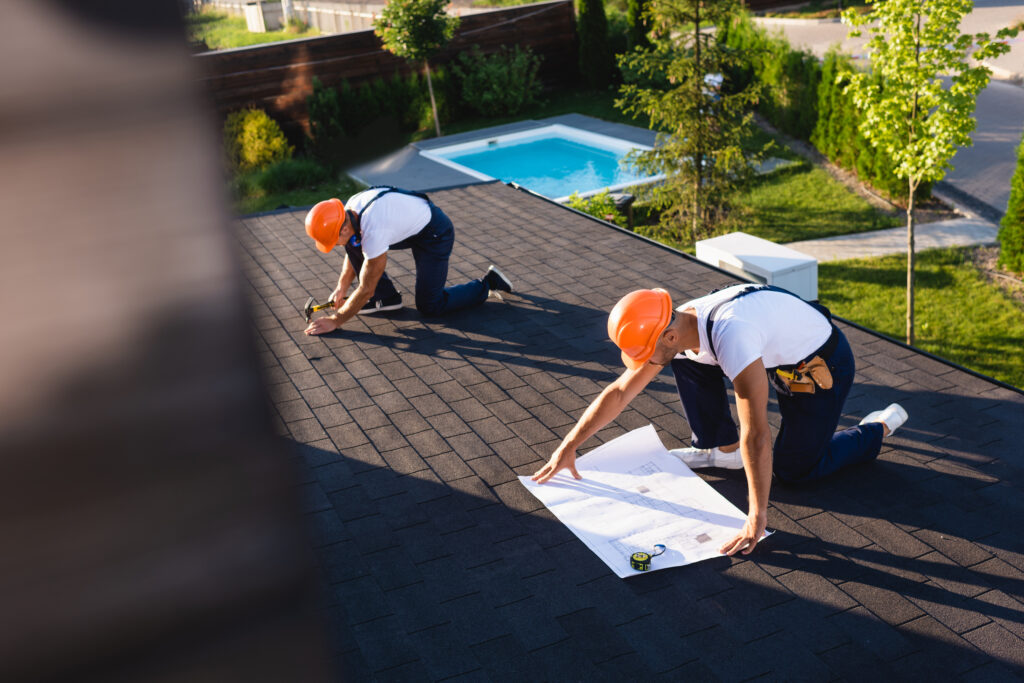We know protecting your property, home or business, can feel overwhelming. A clear plan now can save you stress, money, and downtime when Ohio weather turns fast.
If you own a building or manage facilities, understanding the difference between commercial and residential roofing helps you make smarter decisions and avoid costly delays. Both keep your family, belongings, and business operations dry and safe, but they differ in what they’re made of, how they’re put on, and how you care for them. Here’s a straightforward look at how they compare, what happens during a commercial install, and why working with a local team experienced in both makes a real difference.
The Big Picture: How Commercial and Residential Roofs Differ
- Roof shape and complexity: Most homes use pitched roofs that shed water quickly. Many commercial buildings have low-slope or flat roofs that need careful waterproofing, drainage, and strong edge details.
- Materials: Central Ohio homes often rely on asphalt shingles for durability and curb appeal. Commercial roofs commonly use TPO or EPDM single-ply membranes, modified bitumen, or reflective coatings built for large, low-slope surfaces.
- Load and use: Commercial roofs may carry HVAC units, vents, walk paths, and even solar. These loads call for reinforced design and precise flashing. Residential roofs rarely host that level of equipment.
- Code and safety: Commercial jobs follow stricter building codes, energy rules, and safety plans for occupied buildings. Homes follow residential codes that still require accurate work and proper ventilation.
- Maintenance cadence: Commercial roofs perform best with scheduled inspections and proactive fixes because small membrane issues can spread fast. Residential shingle issues are usually easier to spot and handle early.
Roofing Systems You’ll See Most Often
- Residential roofing:
- Asphalt shingles, including architectural and impact-rated options
- Metal accents or full systems on select homes
- Underlayment, ventilation, and flashing that keep attics dry and efficient
- Commercial roofing:
- TPO and EPDM single-ply membranes with welded or fully adhered seams
- Modified bitumen for durable, multi-layer protection
- Fluid-applied coatings to extend life and improve reflectivity
- Insulation packages that meet energy codes and manage moisture
Each system performs best when it fits our climate. In Central Ohio, freeze-thaw cycles, wind, and summer storms test seams, flashings, and shingles. Choosing materials proven for Ohio weather is key to long-term performance and peace of mind.
What Business Owners Should Know About Commercial Roof Installation
- Start with a thorough assessment: A qualified local contractor such as Ratliff Contracting checks the deck, takes core samples if needed, reviews drainage, and maps penetrations. This reveals whether a tear-off, overlay, or system upgrade fits best.
- Plan for drainage first: On flat or low-slope roofs, we make sure water has a clear path off the roof so it doesn’t sit and cause damage. Tapered insulation, crickets, internal drains, scuppers, and gutters must be sized and placed correctly to prevent ponding.
- Coordinate around building operations: Phasing, safety barricades, odor control, and noise planning protect your tenants or employees and keep business moving.
- Choose the right attachment method: Fully adhered, mechanically attached, or ballasted systems each have pros and cons for wind, energy, and cost. We explain these tradeoffs in plain terms so you can choose confidently.
- Prioritize edge and flashing details: We pay extra attention to curbs, flashings, and edges, because most leaks start at transitions, and quality here matters more than anywhere else.
- Document and warranty: Request photos, daily logs, and material documentation. Know the manufacturer and workmanship warranties, plus the maintenance needed to keep them valid.
Maintenance: Prevent Small Issues From Becoming Big Problems
Commercial roofs
- Schedule inspections twice a year and after major storms.
- Clear drains and scuppers regularly.
- Use walk pads in high-traffic areas, and make sure vendors stick to marked paths.
- Repair seams, flashings, and punctures quickly to stop moisture migration.
Residential roofs
- Inspect after wind or hail, and peek in the attic for leaks or poor ventilation.
- Keep gutters clean so water doesn’t back up under shingles.
- Replace damaged shingles promptly and refresh sealant at key flashings.
A little proactive care can add years of service and support warranty coverage. If your roof does sustain significant damage, choosing a reliable contractor to complete a roof repair is a crucial decision for the future resilience of your roof. Not sure if you have damage after a storm? Ratliff Contracting would be happy to complete a free inspection to help you determine the health of your roof.
Why Hire a Contractor Experienced in Both
When your contractor works daily on residential and commercial systems, you get broader know-how, faster problem solving, and tighter standards.
- Smarter problem solving: Teams trained on both systems can spot ventilation issues, moisture problems, or flashing gaps fast, before they become bigger headaches.
- Streamlined insurance help: Experienced estimators and project managers handle storm claims and documentation with less friction.
- Consistent quality: A culture of safety and detail carries from steep-slope shingle work to low-slope membranes, so you can trust the result across your property portfolio.
As a local, family-owned team serving Central Ohio, Ratliff Contracting brings that blended experience to Columbus and nearby communities. We install asphalt shingles and low-slope systems with the same care for detail, and our Owens Corning Platinum Preferred status reflects proven workmanship and honest guidance. If you’re in New Albany, Westerville, or anywhere in Central Ohio, we’re always nearby and ready to help you compare options and timelines.
Get in Touch
Whether you’re planning ahead or dealing with damage, we’re here to give you real answers and reliable solutions, no pressure, just help. If you’re ready to plan your next project or want to schedule a free, no-obligation inspection, please feel free to Contact Us or call 614-702-ROOF. We’re happy to help with honest guidance and no pressure!

